Text
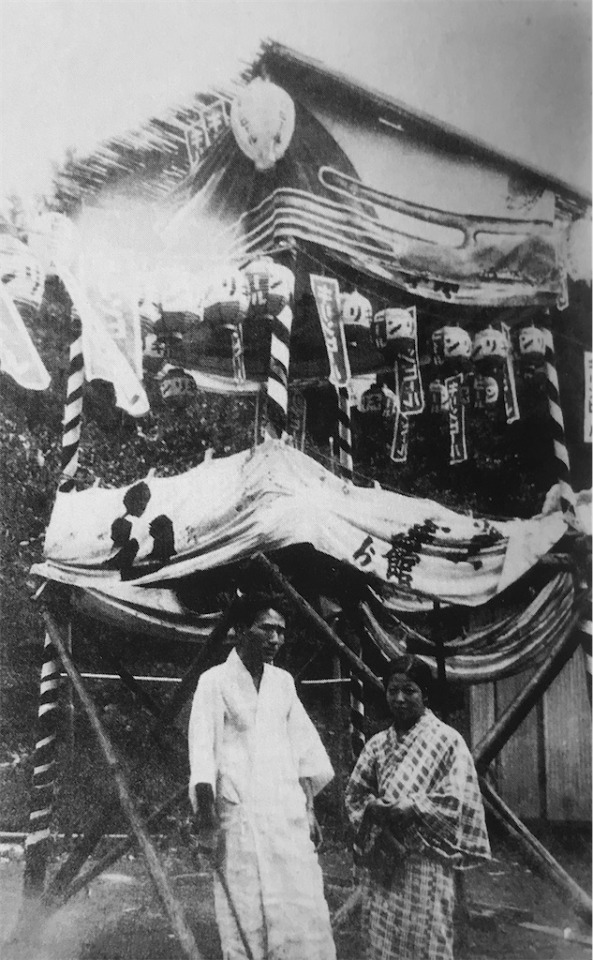
Japanese author Osamu Dazai with his first wife Hatsuyo Oyama.
#author#japan#japanese author#japanese literature#1930s#dazai osamu#osamu dazai#irlbsd#novel writing#novelist#no longer human#ningen shikkaku#the setting sun
22 notes
·
View notes
Text
Japanese author Osamu Dazai

#author#japan#japanese author#japanese literature#osamu dazai#dazai osamu#irlbsd#1930s#1940s#books and novels#novel writing#novelist#no longer human#ningen shikkaku#the setting sun#bungo stray dogs dazai
10 notes
·
View notes
Text
“I composed my last will and testament, my suicide note. One hundred pages that I entitled “Memories.” “Memories” is now considered my maiden work. I wanted to set down, without the least ornamentation, all the evil I’d done since childhood. This was in the autumn of my twenty-fourth year. I sat in the cottage gazing out at an abandoned garden overgrown with weeds, utterly devoid of the ability to laugh or smile. It was, once again, my intention to die. Call it affectation if you will. I was full of myself. I regarded life as a drama. Or, rather, I regarded drama as life. I was no longer of use to anyone…I hadn’t a single thing to live for. I resolved that I, as one of the fools, one of the doomed, would faithfully play out the role in which fate had cast me, the sad, servile role of one who must inevitably lose…I had written my suicide note, the testament of my infancy and boyhood, the first-hand account of a hateful child, but that testament, rather than freeing me, became a burning obsession that cast a faint light into the empty darkness. I couldn’t die yet. “Memories” alone wasn’t enough. Having revealed that much, I now wanted to set it all down, to make a clean breast of my entire life until then, to confess everything. But there seemed no end to it. First, I wrote about the [double suicide] at Kamakura, No good. That didn’t say it all, somehow. I wrote another piece, and still I was unsatisfied. I sighed and began another. It was a series of little commas; the final period never came.”
—
Dazai Osamu, “Eight Scenes from Tokyo” from Self Portraits

215 notes
·
View notes
Text
Japanese author Osamu Dazai in middle school.

#author#japan#japanese author#japanese literature#1930s#osamu dazai#dazai osamu#novel writing#history#japanese#japanesewriting#writing#books and novels#novelist#no longer human#ningen shikkaku#the setting sun#irlbsd#1920s#showa era
19 notes
·
View notes
Text
“Now that I harbored doubts about the one virtue I had depended on, I lost all comprehension of everything around me.”
—
Dazai Osamu, No Longer Human
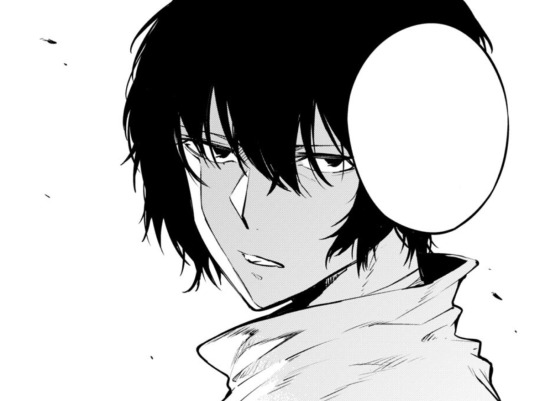
282 notes
·
View notes
Text
“I was depressed… At such times I always sought refuge in a bookstore. There was one close by, and I hurried there now. Just to see all the books lining the shelves would lighten my mood as if by magic… I went because any book gave me comfort and solace at the time.”
—
Dazai Osamu, “Memories” from Crackling Mountain and Other Stories

373 notes
·
View notes
Text
“It was a series of little commas; the final period never came.”
—
Dazai Osamu, “Eight Scenes from Tokyo” from Self Portraits
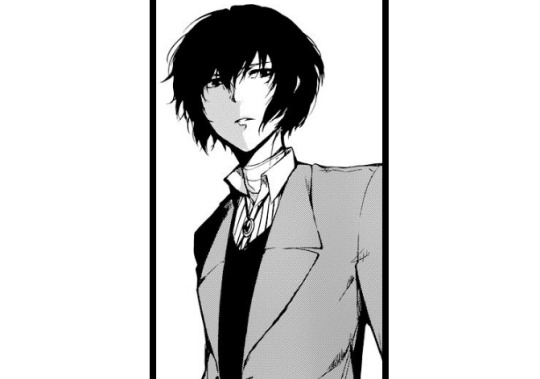
224 notes
·
View notes
Text
Dazai Osamu’s “The Flowers of Buffoonery”
“The Flowers of Buffoonery” (道化の華, Dōke no hana) by Dazai Osamu is being published in English. The story has been translated by Sam Bett and will be released March 7, 2023.

This is one of the stories foreign fans of Dazai have desperately wanted to be translated. It is the story that Dazai submitted on his first attempt to win the Akutagawa Prize in 1935 and one of the stories included in Dazai’s first collection The Final Years, published in 1936.
The story is described on many websites as "Dazai’s hilariously comic and deeply moving prequel to No Longer Human”. While the story is a sort of prequel to No Longer Human, it’s not a prequel in the sense that Dazai wrote about what happened before the events No Longer Human took place. The description for the English translation on Amazon says the following:
The Flowers of Buffoonery opens in a seaside sanitarium where Yozo Oba―the narrator of No Longer Human at a younger age―is being kept after a failed suicide attempt. While he is convalescing, his friends and family visit him, and other patients and nurses drift in and out of his room. Against this dispiriting backdrop, everyone tries to maintain a lighthearted, even clownish atmosphere: playing cards, smoking cigarettes, vying for attention, cracking jokes, and trying to make each other laugh. While No Longer Human delves into the darkest corners of human consciousness, The Flowers of Buffoonery pokes fun at these same emotions: the follies and hardships of youth, of love, and of self-hatred and depression. A glimpse into the lives of a group of outsiders in prewar Japan, The Flowers of Buffoonery is a darkly humorous and fresh addition to Osamu Dazai’s masterful and intoxicating oeuvre.
“The Flowers of Buffoonery” is a sort of prequel to No Longer Human in that the protagonist of both stories are named Oba Yozo, both are I-novel works (semi-autobiographical, confessional literature) so the characters and events are loosely based on Dazai’s own experiences, and both stories share similar themes. “The Flowers of Buffoonery” was written thirteen years before No Longer Human, which may be why the overall atmosphere in the story has a much lighter atmosphere. There is a definite change in Dazai’s writing from his earlier short stories, which are more hopeful and charming, to his later works that are much darker and forlorn. In a way, “The Flowers of Buffoonery” could be considered a starting point in the journey Dazai took to write No Longer Human. The differences in the character “Oba Yozo” of “The Flowers of Baffoonery” and the “Oba Yozo” of No Longer Human are a sort of reflection of Dazai himself and how he changed from the beginning of his writing career to the end of his life.
299 notes
·
View notes
Text
“I am afraid because I can so clearly foresee my own life rotting away of itself, like a leaf that rots without falling, while I pursue my round of existence from day to day.”
—
Dazai Osamu, The Setting Sun
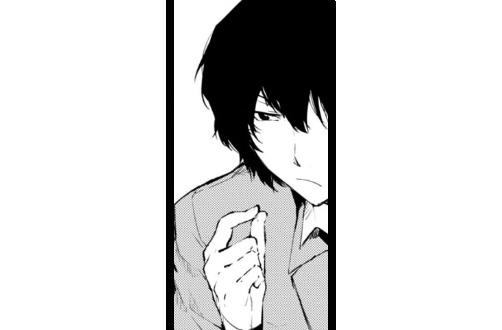
292 notes
·
View notes
Text
Japanese author Osamu Dazai.

#author#japan#japanese author#japanese literature#1930s#1940s#bungou stray dogs#literature#vintage#bsd dazai#osamu dazai#dazai osamu#writing#no longer human#ningen shikkaku#the setting sun#japanese
34 notes
·
View notes
Text
The search for Japanese author Osamu Dazai and his Mistress Tomie Yamazaki's mortal remains in the days following their disappearance. (June 1948)

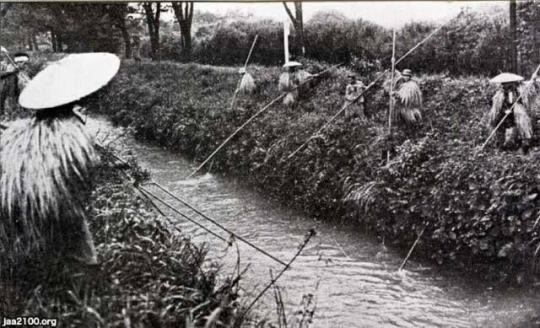
Location- Tamagawa Aqueduct
The search was extremely challenging due to the rapid rise in water level after heavy rain fall, mud, and swift current.
It would take 6 days to finally find them, coincidentally on the authors 39th birthday, 19 June 1948. After being found, Dazai was almost immediately cremated.
#author#japan#japanese author#japanese literature#1930s#1940s#bungou stray dogs#literature#vintage#bsd dazai#osamu dazai#dazai osamu#writing#novel writing#japanese history#history#irlbsd#no longer human#ningen shikkaku#the setting sun#books and novels
69 notes
·
View notes
Text
“…my heart gets choked with emotions and I just about suffocate from pain. I feel the floor dropping out from under me, as if not knowing whether I were alive or dead, as if dreaming in broad daylight; the comings and goings of the people in front of the station, too, seem small and far away, as though I have peeked through the wrong end of a telescope; and the world is completely hushed. What on earth am I waiting for?”
—
Dazai Osamu, “Waiting”

127 notes
·
View notes
Text
“Another type of critic, reflecting on a sense of futility, yields a transcendent, apostolic Dazai as ‘saint of negativity.’ In sum, the critic invariably relies on a psychological analysis derived from Dazai’s quasi-autobiographical writings… Tracing Dazia’s literary endeavors from his high school days of socialist realism through to his nihilistic novels of the late 1940s, the critical process erects a model of negative sensitivity, a refined esthetic turned against whatever the dominant trend happens to be. Dazai the man, like the historical Buddha, becomes an overdetermined sign, laden with past, future, and transcendent incarnations. Like the cosmic Buddha, Dazai is both extrinsic, as a guide to a wayward, youthful flock, and immanent, within the negativity in each and all of us. As such, he comes to have meaning beyond his actual life and writing, becoming an allegorical hero of revolt, part of a modern myth of negativity. The myth is complex and has important ramifications in contemporary images of Japan, not the least of which is the privileged status of the ‘alienated writer’ as paradigmatic of the modernization process.”
—
Alan Stephen Wolfe, Suicidal Narrative in Modern Japan: The Case of Dazai Osamu
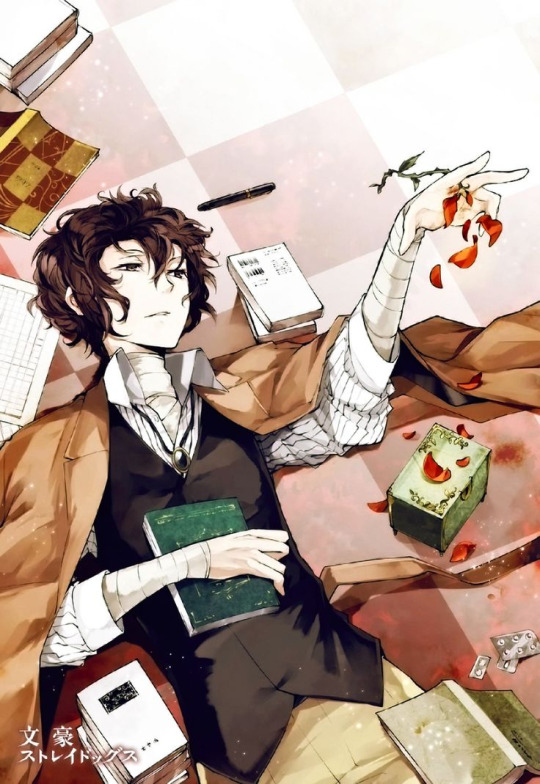
85 notes
·
View notes
Text
Japanese author Osamu Dazai with his wife Michiko Tsushima.

#author#japan#japanese author#japanese literature#1930s#1940s#bungou stray dogs#literature#bsd dazai#vintage#dazai osamu#osamu dazai#books and novels#novel writing#writing#vintage japan#novelist#no longer human#ningen shikkaku#the setting sun
74 notes
·
View notes
Text
Japanese author Osamu Dazai being interviewed by actress Seki Chieko for a popular magazine. (Spring 1947).

#author#japan#japanese author#japanese literature#1930s#1940s#bungou stray dogs#literature#vintage#bsd dazai#osamu dazai#dazai osamu#books and novels#no longer human#ningen shikkaku#the setting sun
43 notes
·
View notes
Text
Japanese author Osamu Dazai (September 1943).
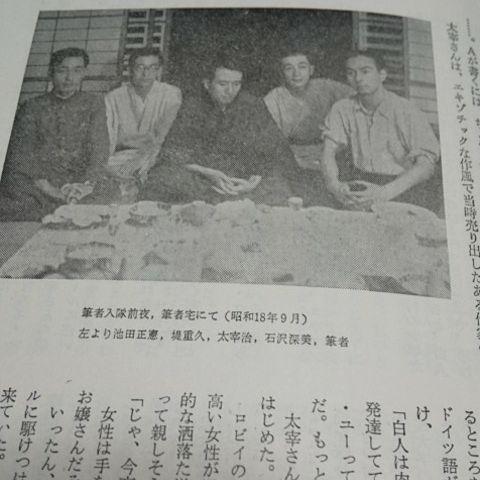
#author#japan#japanese author#japanese literature#1930s#1940s#bungou stray dogs#literature#vintage#bsd dazai#osamu dazai#dazaibsd#irlbsd#vintage books#vintage photography#novel writing#books and novels#no longer human#ningen shikkaku#the setting sun
8 notes
·
View notes
Text
English school notebook of Japanese author Osamu Dazai.
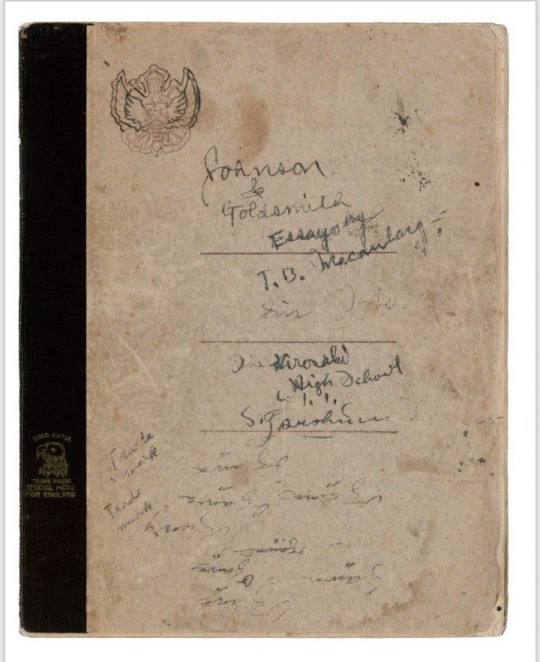
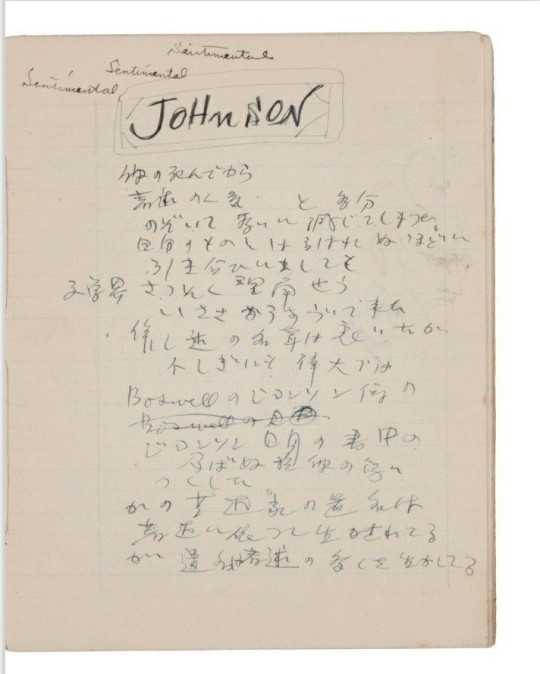
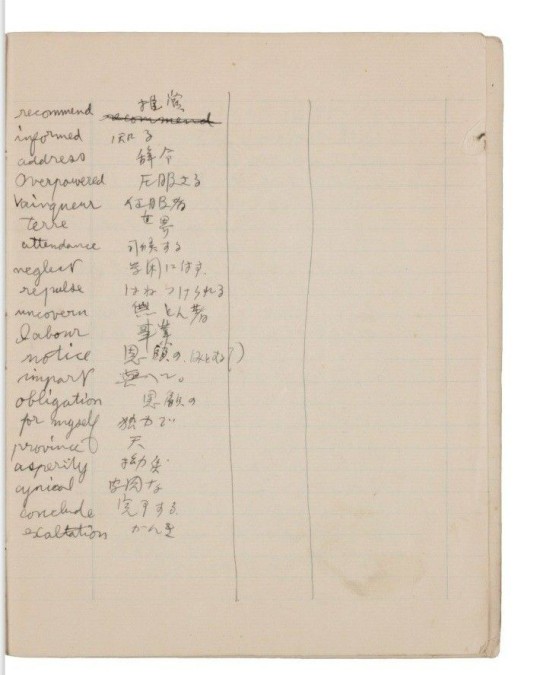

#author#japan#japanese author#japanese literature#1930s#1940s#bungou stray dogs#literature#vintage#bsd dazai#osamu dazai#dazai osamu#irlbsd#books and novels#novel writing#1920s
47 notes
·
View notes